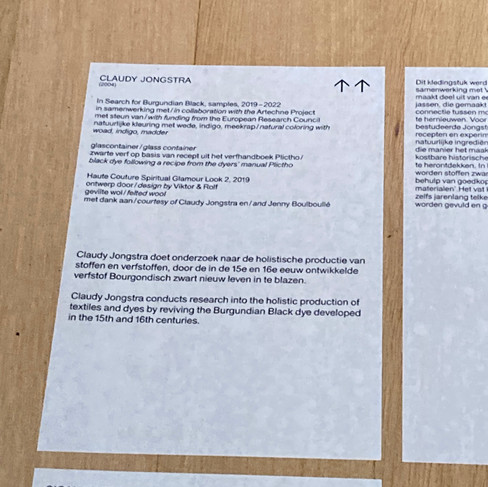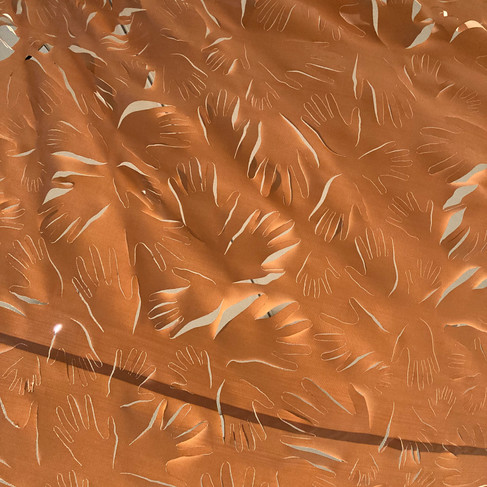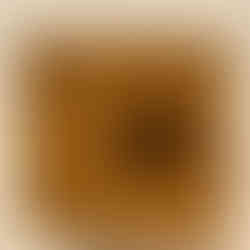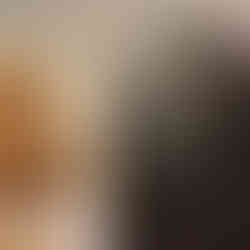Material Matters
- asafford4
- Nov 28, 2022
- 6 min read
Updated: Dec 8, 2022

In the summer of 2022, many of my site visits in the Netherlands had to do with fashion and/or materials, often both. Fashion is a field that allows ample room for the end user to control what they consume via thrifting, DIY culture, upcycling, buying local, etc. In other words, with fashion a consumer is more empowered to choose the ethics they do or don’t support, more than oil or food for example.
“By choosing ethically you become the solution. Wear the change you want to see.”
-Good On You app*

Many material innovations come from the makers in the fashion and textile realm, often the designers or people in academia. Working with sustainable and alternative materials is something that excites my students. Many environmental concerns feels out of their control, but this is a hands-on process that students can explore and manipulate. It is self-determination even if small scale. My wearable art and sculpture students have enthusiastically experimented with materials, and love the transformational aspects of creating their own materails. I think of making your own materials as a small act of hope in tough times. It's a chance employ new tactics.
I visited several organizations; some for the first time, and many as repeat visits. Friends had sent me in various directions and often one visit led to the next. Here is a sampling of my visits and the materials and processes I encountered.
It’s Our F*cking Backyard at the Stedelijk Museum, Amsterdam

From the Stedelijk’s website:
“MATERIALS OF THE FUTURE AND THE POWER OF NATURE"
"The exhibition shows that designers can make an important difference. They find new uses for waste material, such as a lamp made from orange peels and jewelry made from ocean plastic for Balenciaga. Some projects focus on the use of natural materials, such as a fungal mycelium tunnel and a flax- and bio-based resin surfboard. There’s even a light installation powered by micro-organisms that need to be fed during the exhibition period. Through experimental research and re-inventing age-old craft techniques, designers come up with improved use of materials.”
Here is a great introductory video to give some background.
And here are images of the vast majority of the work in the show. Included next to each image is text from the show; clunky but the easiest way to give more information. Many of the artists/designers have been featured in my past posts, such as Plastic Whale, Studio Drift, and Formafantasma. There are also artists I have seen at Mediamatic.
Here We Are! Women and Design at Kunsthal Rotterdam
“Here We Are! is a celebration of over a hundred women who have been, and are, responsible for defining design. Step into this grand and varied exhibition with furniture, ceramics, glass work, jewelry, fashion, graphic design and textiles spanning a period of 120 years. Exceptional pieces from the collection of the Vitra Design Museum form the point of departure. From Bauhaus pioneers and designs for space capsule interiors to legendary design classics and the women who are currently redefining their profession through sustainable innovations. Discover a new perspective on the story of modern and contemporary design at the Kunsthal.” (fr. Kunsthal website)
My highlights below include many research-based projects (clay explorations by Atelier NL, and Vitra Design Museum), seaweed as a material by Julia Lohmann, explorations of hay as a furniture material, as well locally sourced materials for glass and ceramic glazes. There is also a selfie with the work of personal hero Bauhaus artist Gunta Stölzl , and Soviet era space architect Galina Balashova (personal hero if not for her color palette alone), and a wonderful series of subjective atlases made by residents of the cities they explore. I was lucky enough to find the atlas of Kaunas when I travelled there later in the summer.
“A studio, incubator and production facility for innovative fashion.”
I was sent here by colleagues Annet Couwenburg and Alan Grover, who along with their MICA students, have worked with Fashion Tech Farm during their annual visits to Dutch Design Week.
It was begun by Marina Toeters and Matthijs Vertooren, and is a place where many individuals and academic groups around the Netherlands come together to share facilities and ideas. It's a hub, a platform, and incubation space full of activity.
Marina took me around, showed me many of the projects underway, and introduced me to many of the artists, designers, and professors who use Fashion Tech Farm as a hub. I am quite interested in 3D printing on fabric, and in some of the images below you can see some examples and how can add form to the fabric.

“BYBORRE combines technology and craftsmanship to future-proof the textile industry. Since 2015, global industry leaders in fashion, sportswear, interior and automotive have worked with textile design tool BYBORRE Create™ to design high-performance textile from the yarn up, add a brand-aligned aesthetic and regain control over its environmental footprint.”
Annett Couwenburg also sent me to Byborre, beyond Westerpark in the west of Amsterdam. I met with representative who gave me a quick tour around the show room. They work with many companies to develop new ways to use materials. They also work with individual artists as well as educational groups to find new ways to create textiles.
The showroom focused on their work as a platform to bring industrial makers together, to work together and to innovate. It showed many of their finished products, as well as resource areas to help small-scale creatives.
Sadly I was not invited to the area where the actual making was happening, and it all stayed in the abstract realm of seeing the finished products.
I was left with a few questions as to their environmental claims, although I can't say I brought this up with my guide to hear the full story. Some of the companies they were tied to are not particularly known for good environmental ethics (Dupont, I am looking at you). Much of the focus seemed to be on recycling plastics, which while it has it's benefits, I wonder if it just keeps it out of the waste stream a bit longer.
Materials explored both sustainability (with "biomaterials") and recycled materials.
The idea of textile passports show Byborre's focus on origins of a material, with an eye to repurposing and environmental impact.
Examples of some finished products, including (top middle) the infamous Miffy (or in Dutch, Nintje)
Fashion for Good
I try to go to Fashion for Good whenever I am in Amsterdam to see what they have on exhibition. When a CSW alum who is very interested in textiles, came through town, I knew where to take her!
Fashion Week: A New Era
“Over three floors of exhibits, we unpack the phenomenon of Fashion Week, delving into its past, present and future — view historic looks from the runways of Balenciaga, Versace, Moschino, and more, and discover the innovative work of Dutch fashion designer Ronald Van Der Kemp and digital fashion house The Fabricant!
The exhibition also hosts a special showcase of sustainable looks from a collaboration between the Fashion for Good Museum and The Fashion Design Council of India, with Lakmé Fashion Week as well as three looks from fashion house Botter World and a digital installation from Evelyn Mora.”
This work is by Indian designer Nitin Bal Chauhan. This collection, called Countdown, uses fabrics dyed with AIR-INK, the first commercial grade ink made from air pollution by Graviky Labs. The concept for Countdown is "a call to action against pollution problems particularly around the urban areas of large cities." (from signage at Fashion for Good)

This piece is by Indian Designer Ka-Sha in conjunction with KBCols Sciences. The aesthetics of the piece relates to water as an ever changing form. The cotton fabric is dyed with dye made by KBCols Sciences using a living microbial fermentation technology to dye the fabrics. It's a much more environmentally friendly way to color fabric.
Sheltersuit by Bas Timmers, who designed this suit after learning of a friend's father who had died from having to sleep outside in the cold. Timmers "sourced leftover, weather-resistant materials-a sleeping bag and a tent...The non-profit organization Sheltersuit Foundation was formed and has since distributed more than 20,000 warm products to support people in Europe, South Africa, and the U.S." (text from Fashion for Good signage)
And below are images from FFG's changing display on material and technological experimentations. This is my favorite part of FFG, as you can see the melding of art and science leading to interesting if not beautiful innovations.
AND MYCELIUM!!!!
It seems mycelium, the network structures of mushroom organisms, are all over the place in the Netherlands! I came across it at Fashion for Good as a material for fashion, Mediamatic who was using it for outdoor pigeon structures, and at an artist building where they seemed to be experimenting with it as a growth medium.
Links
*The Good on You app helps inform the consumer about the ethics of various clothing companies.
"The Good On You app gives you the power to easily check the impact of your favourite fashion brands on the issues you care about. Use the app to discover better alternatives, learn more about ethical fashion shopping, and get exclusive offers from the best brands."






















































































































































































































































































































































Comments